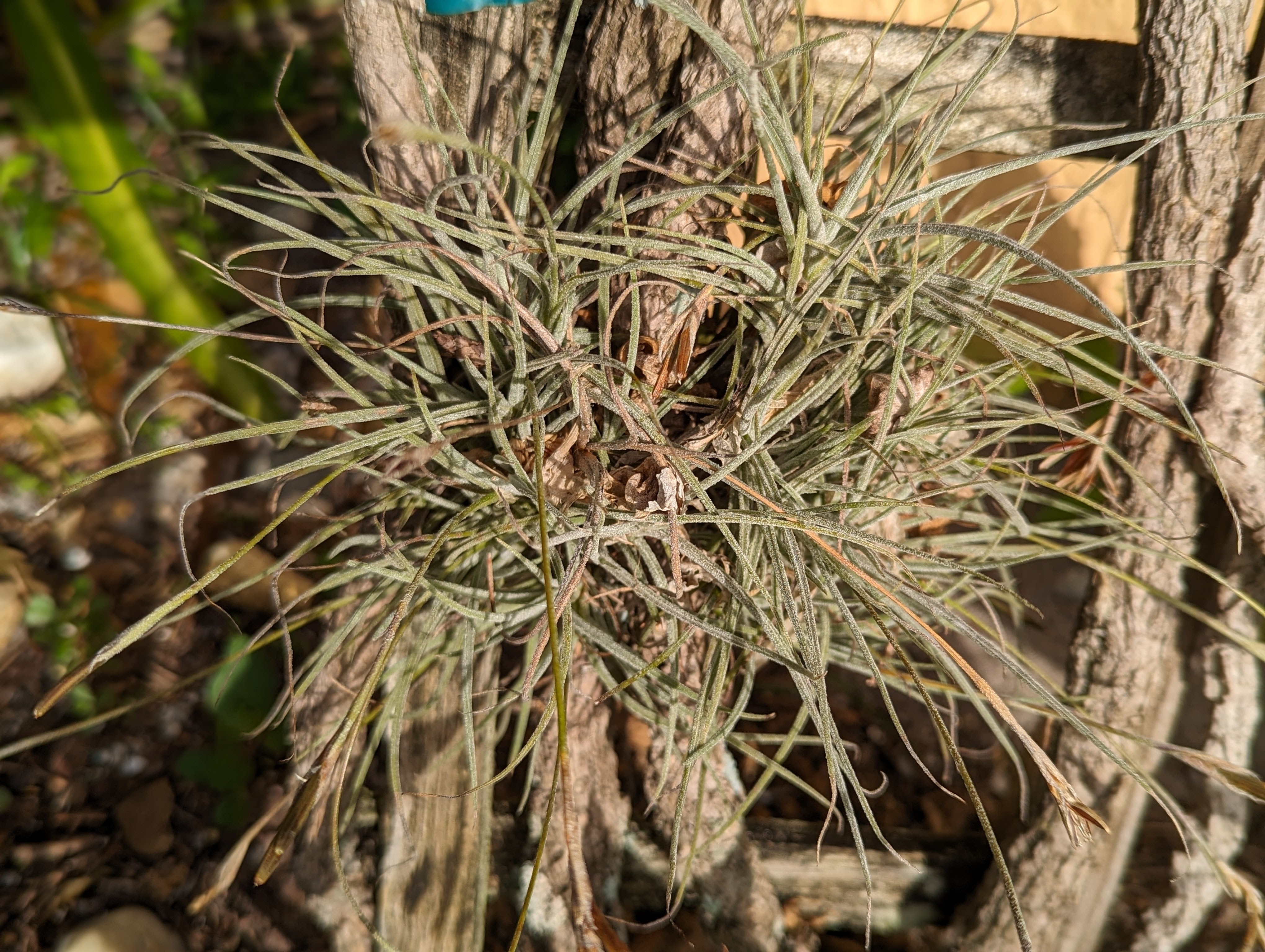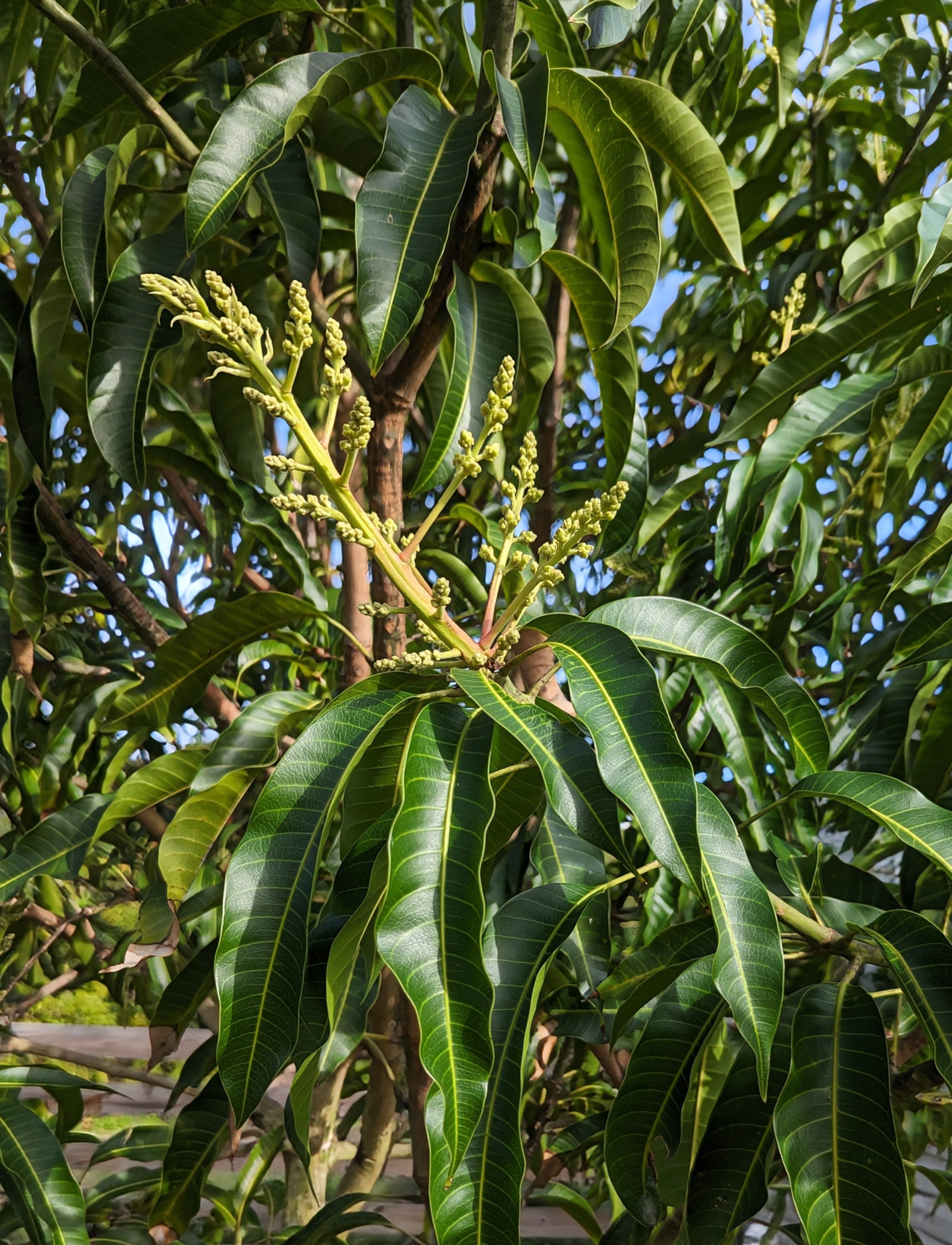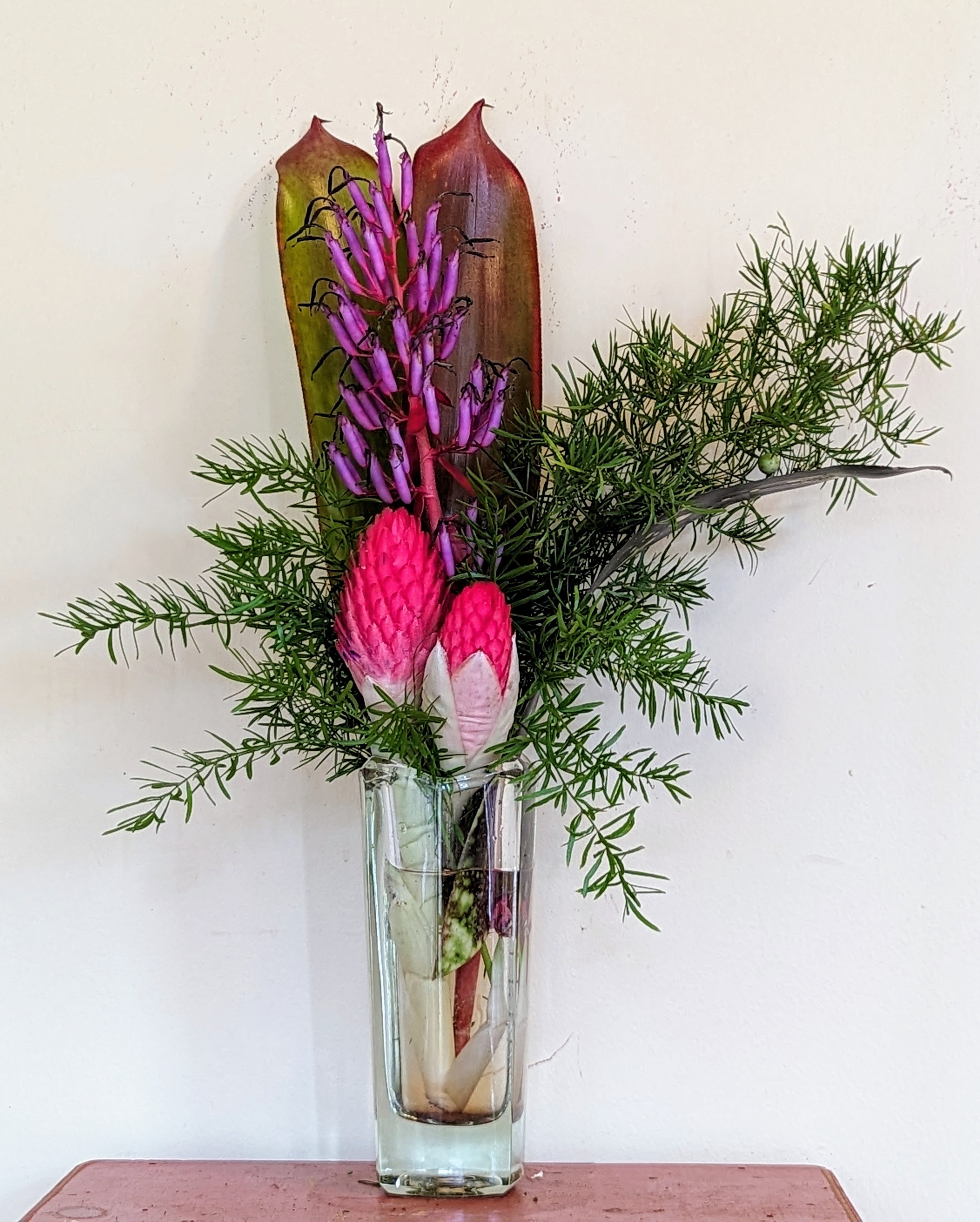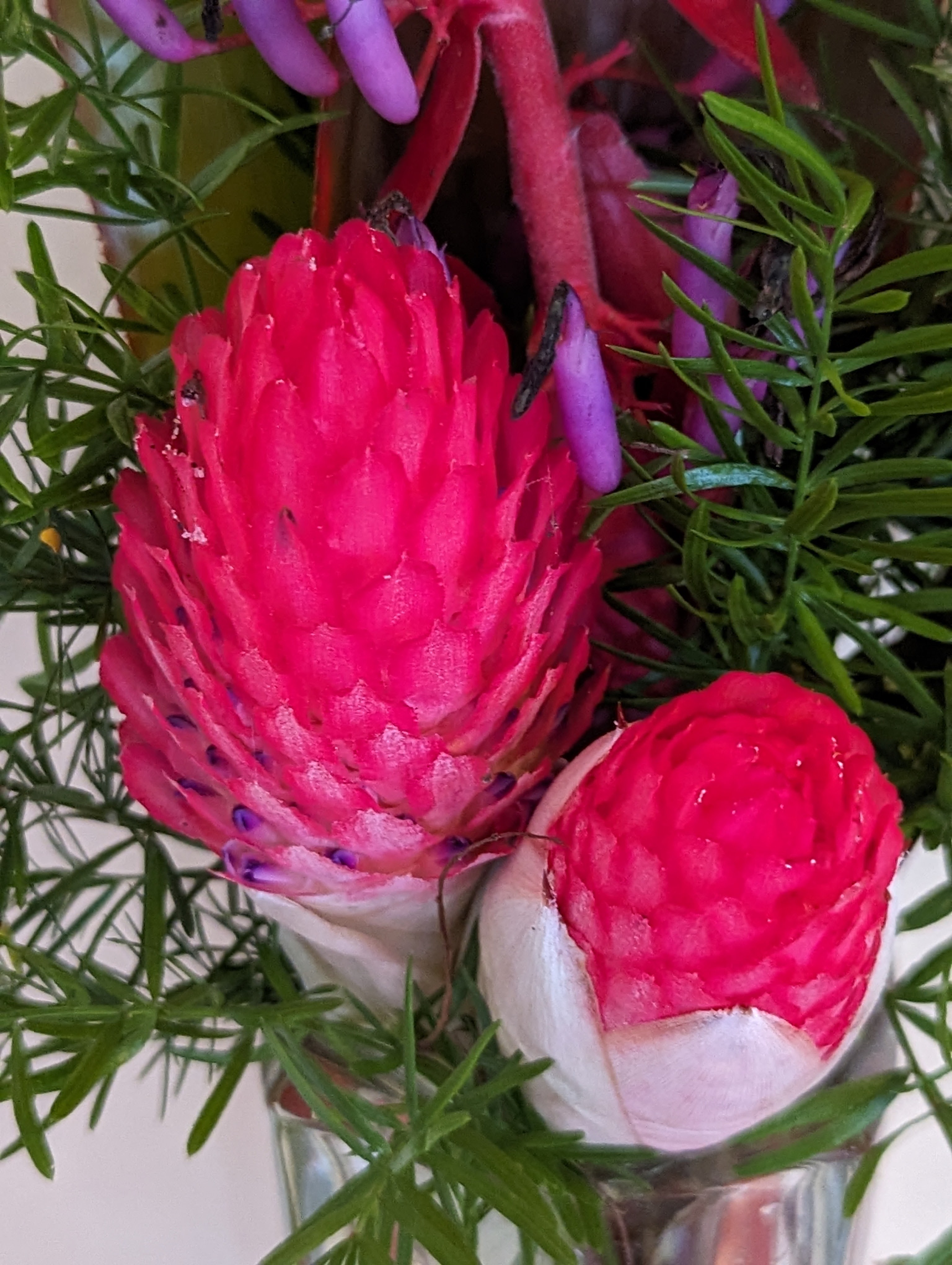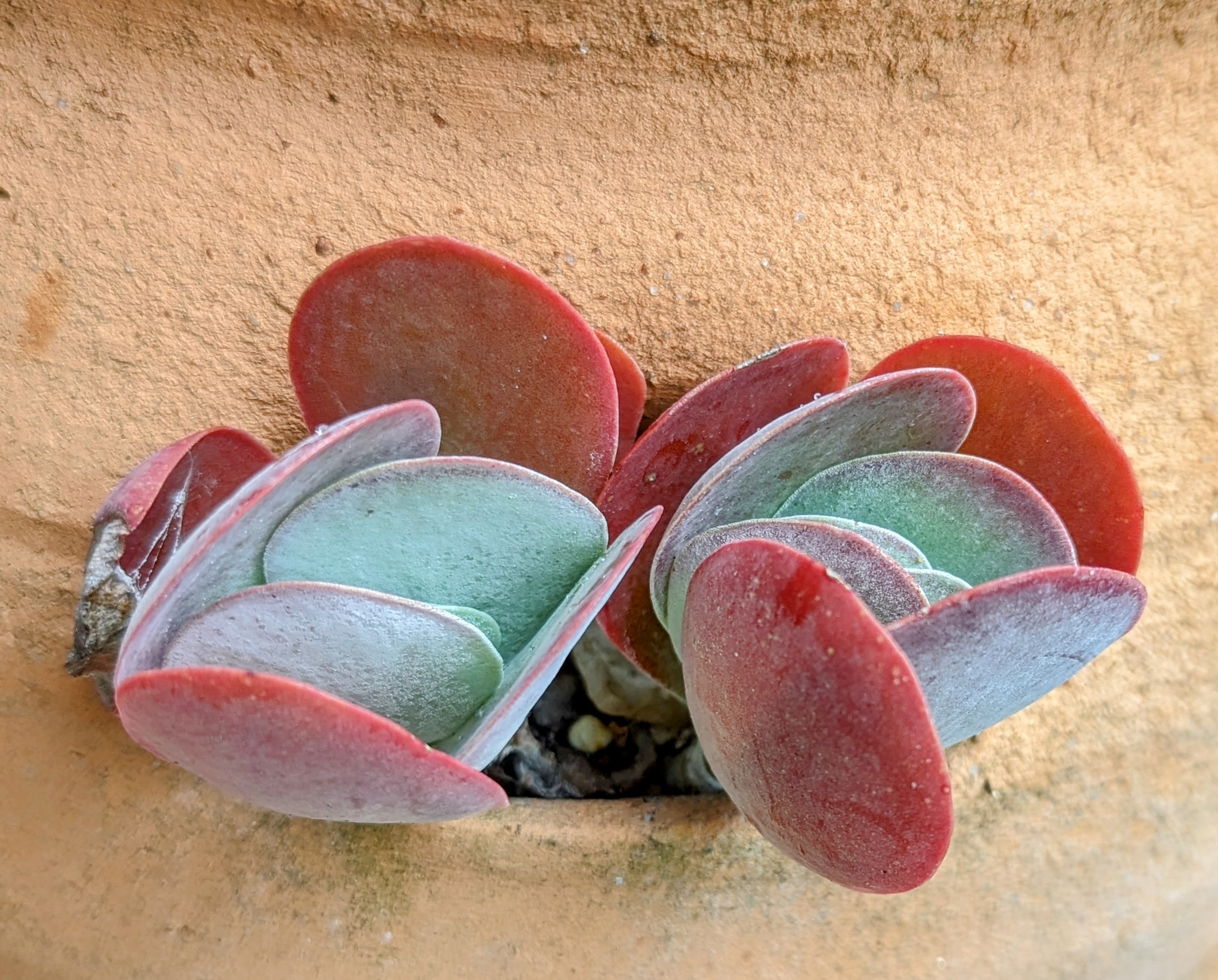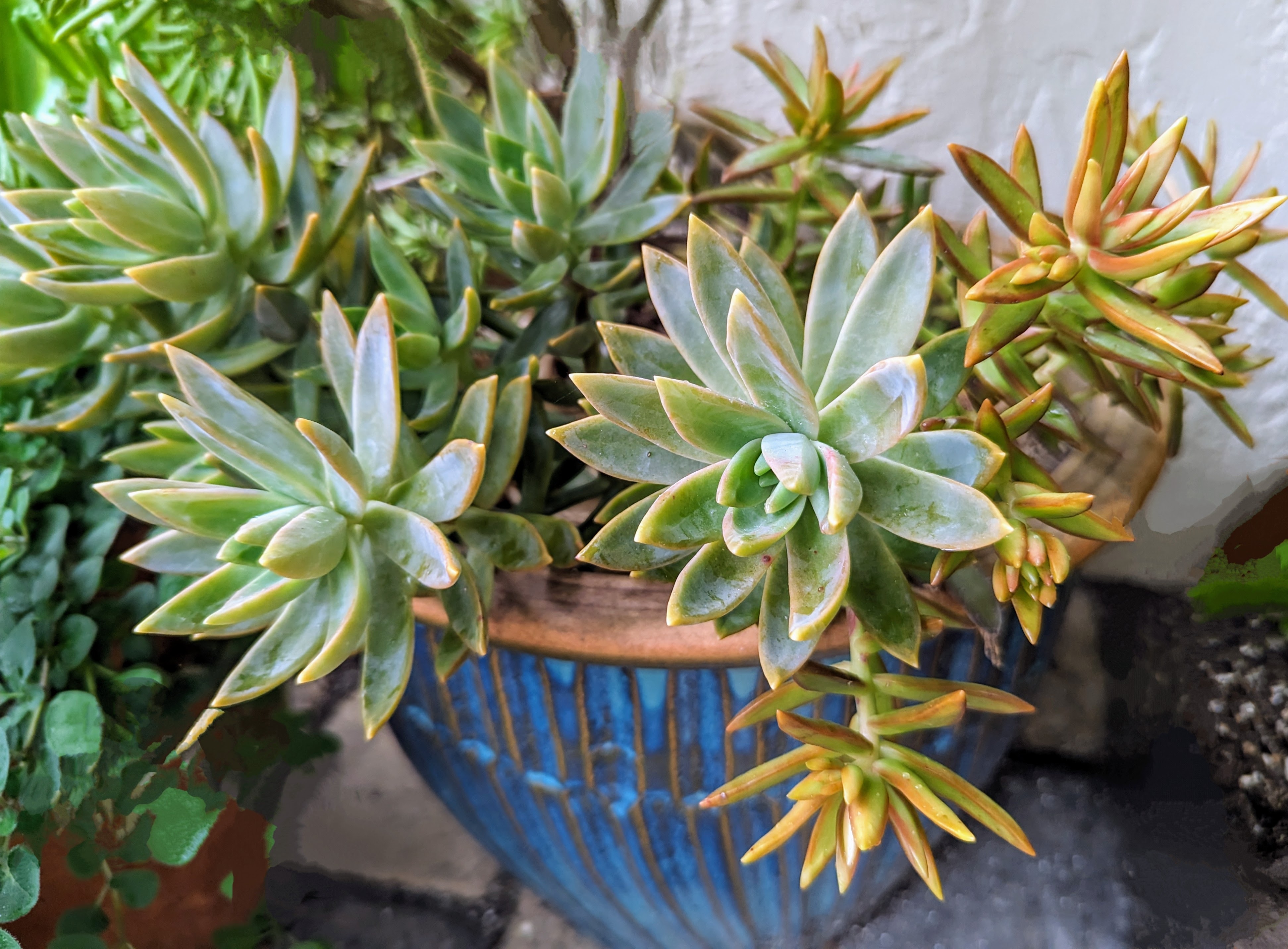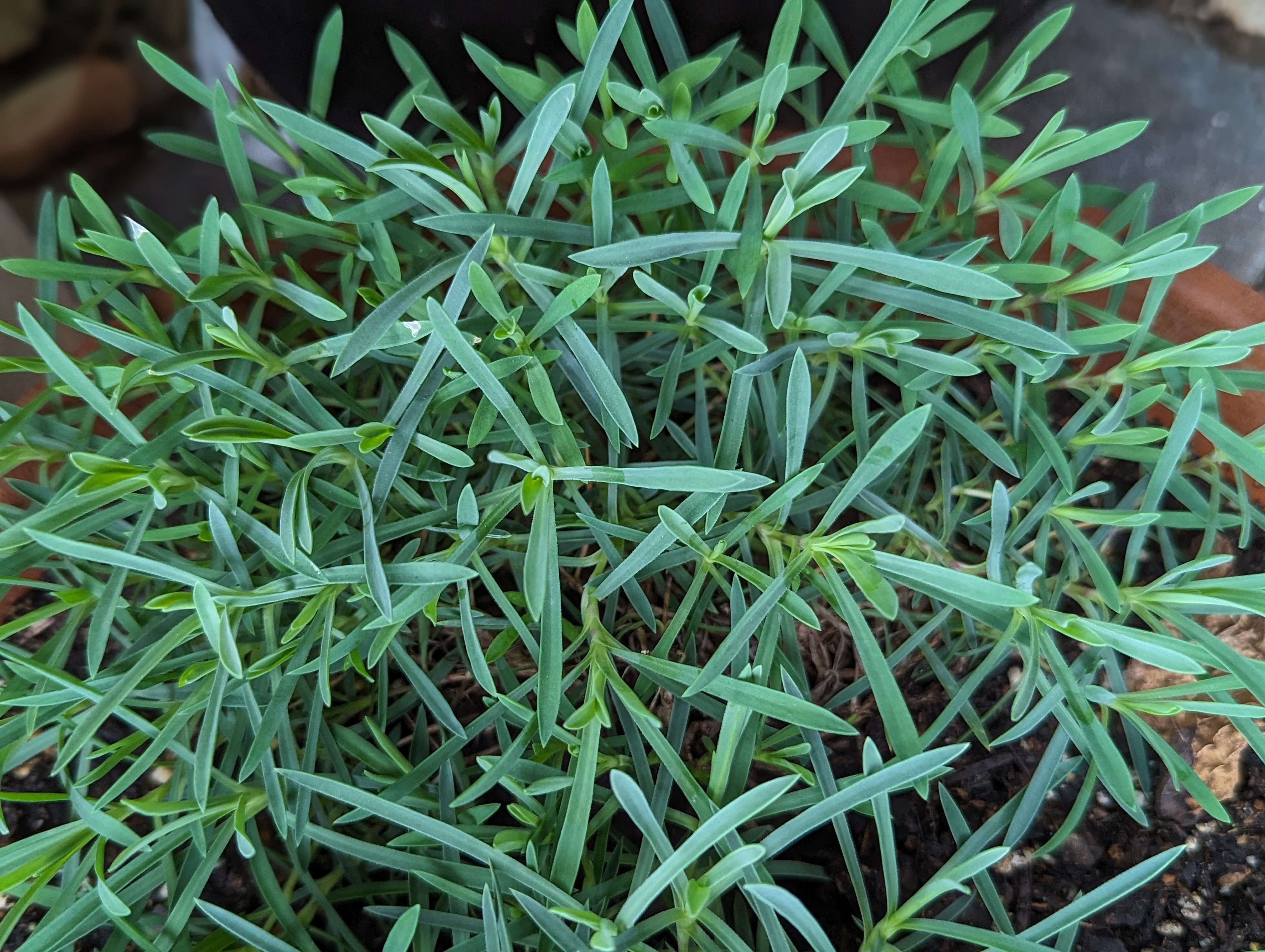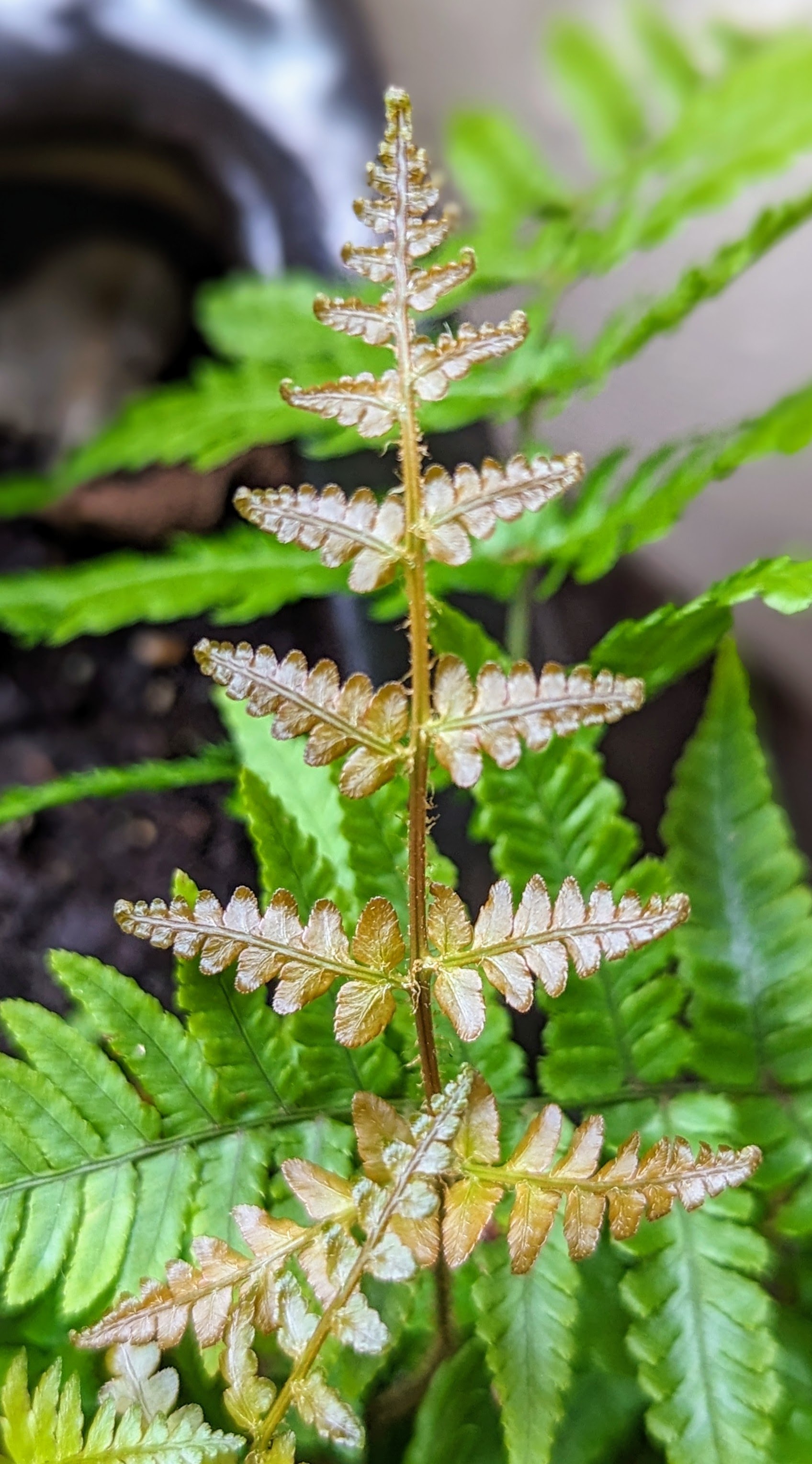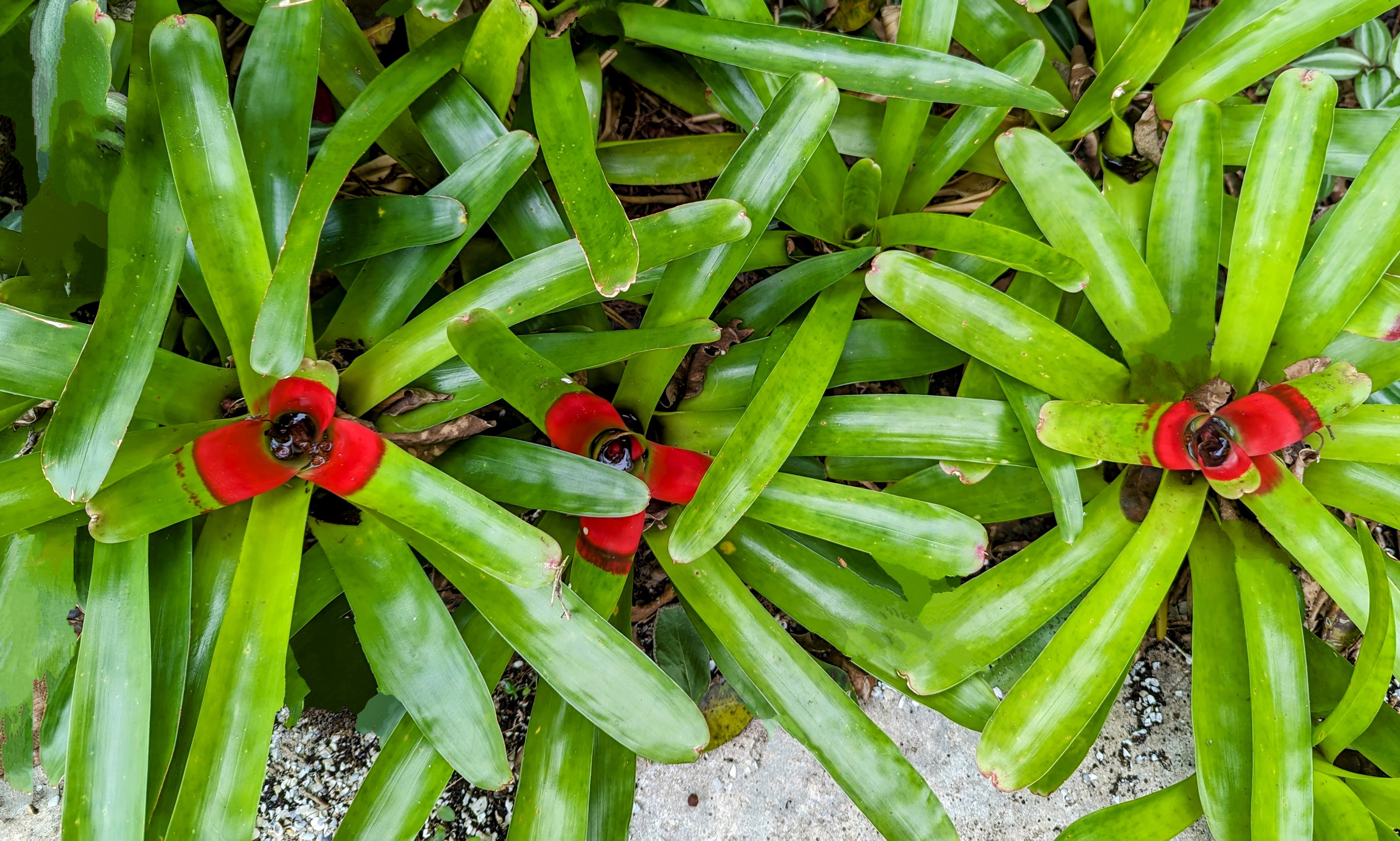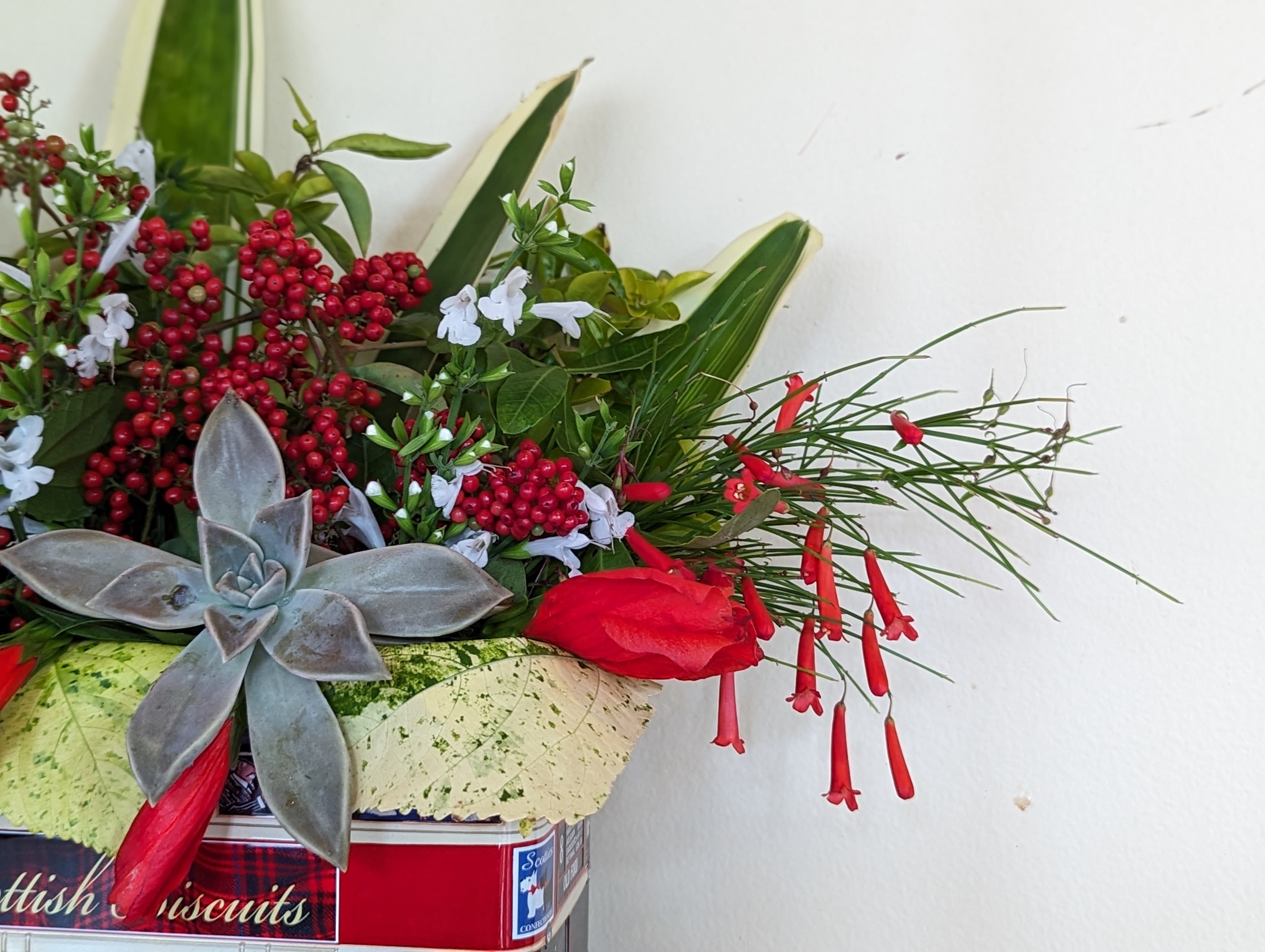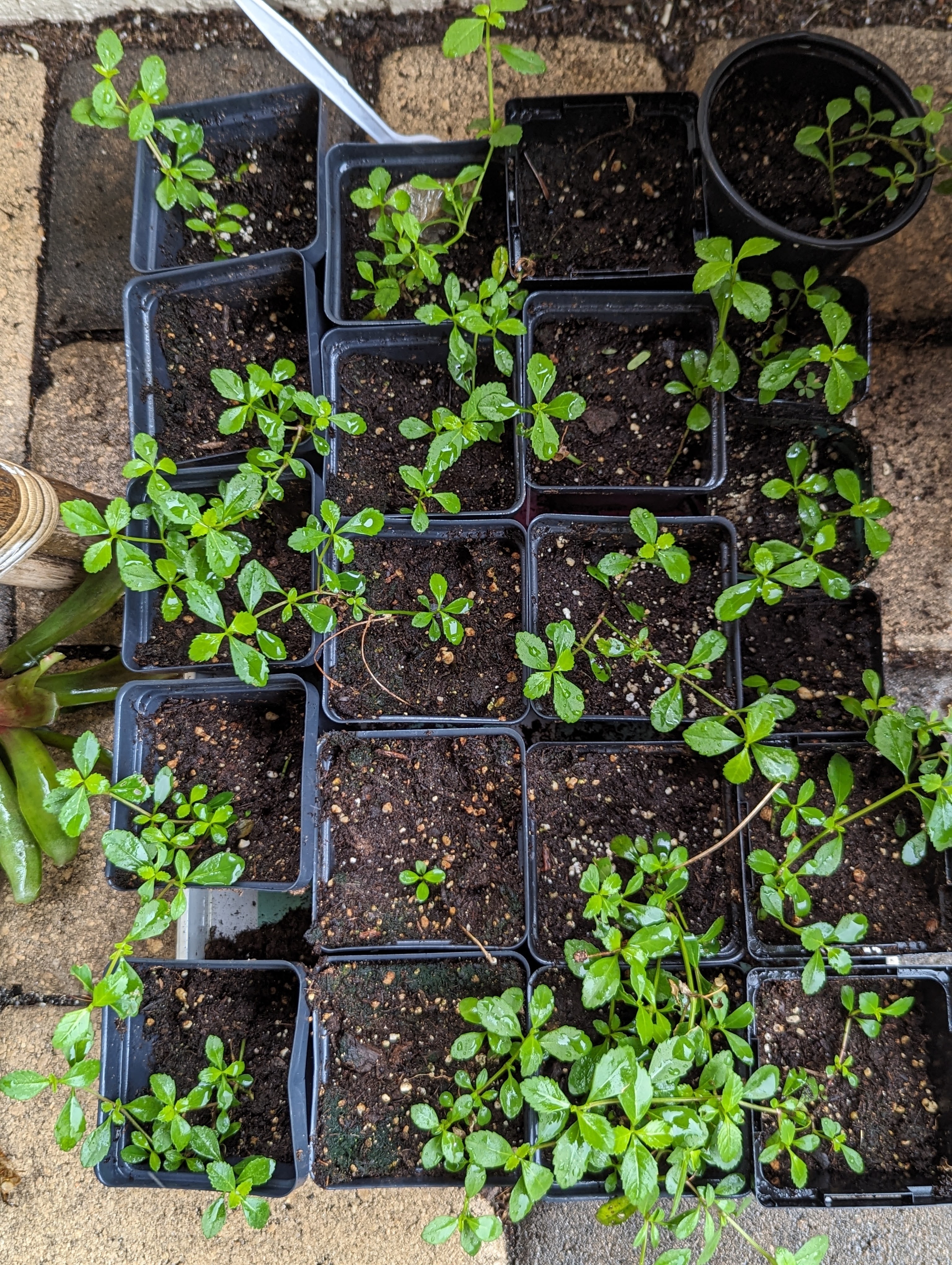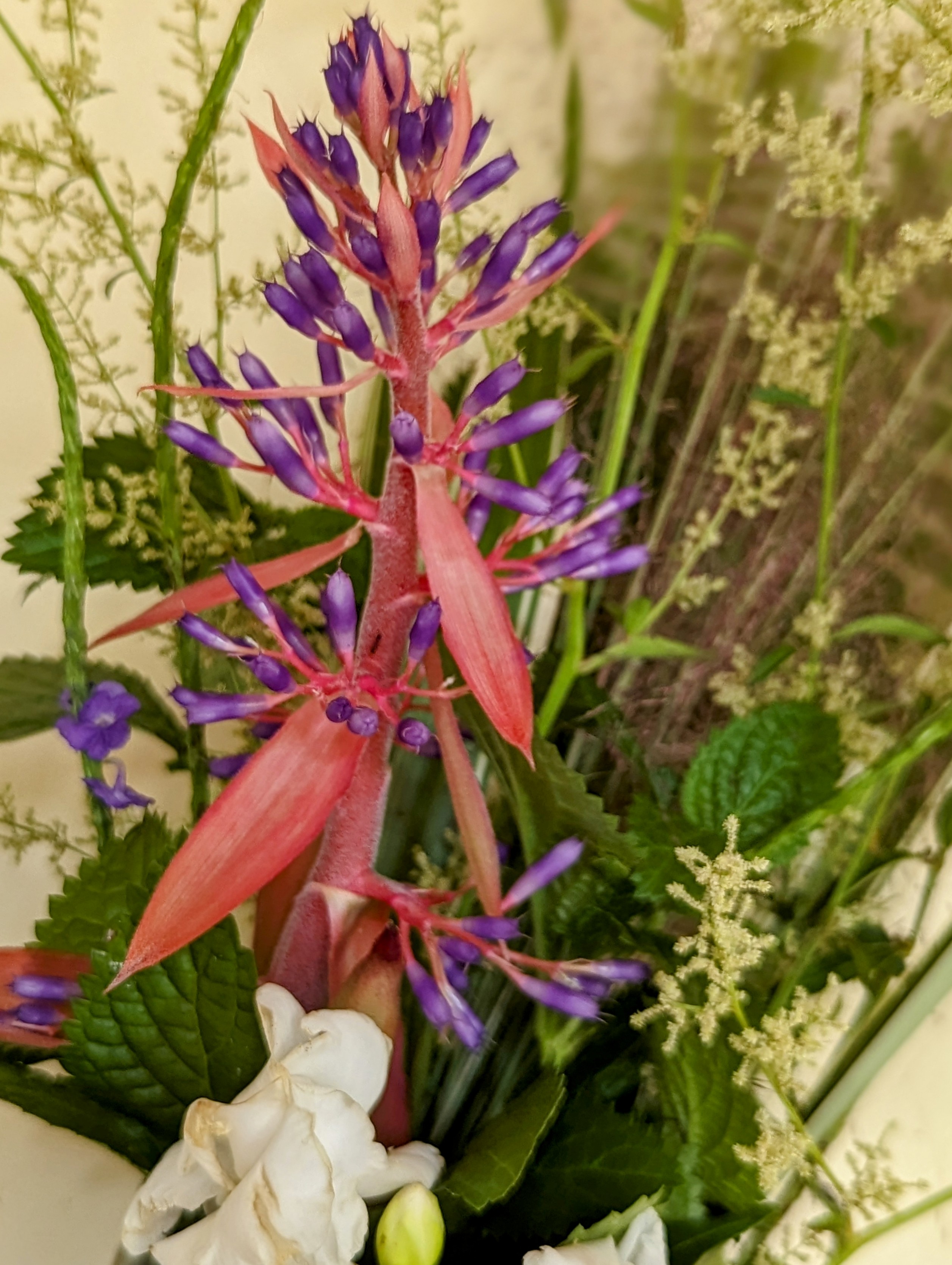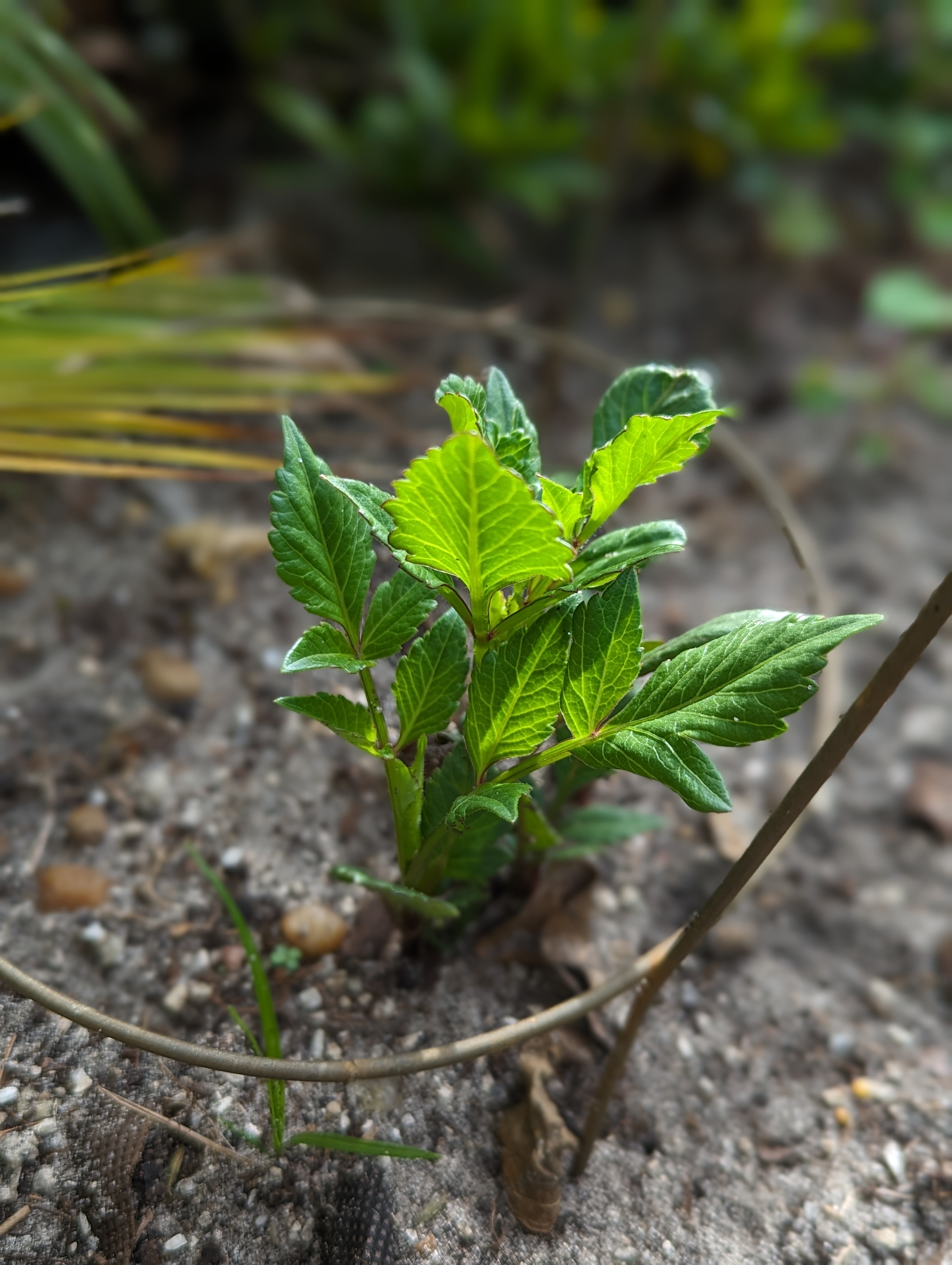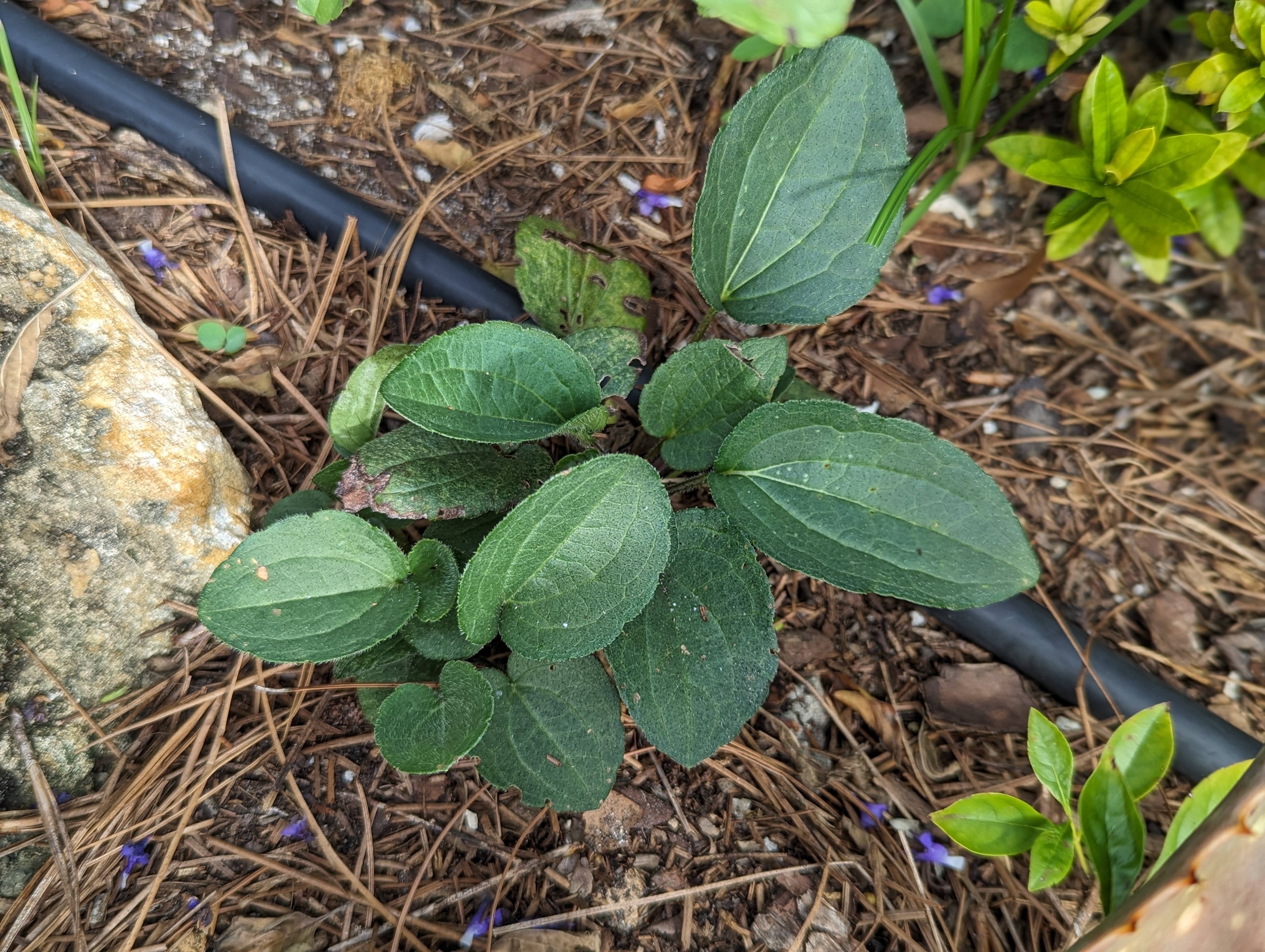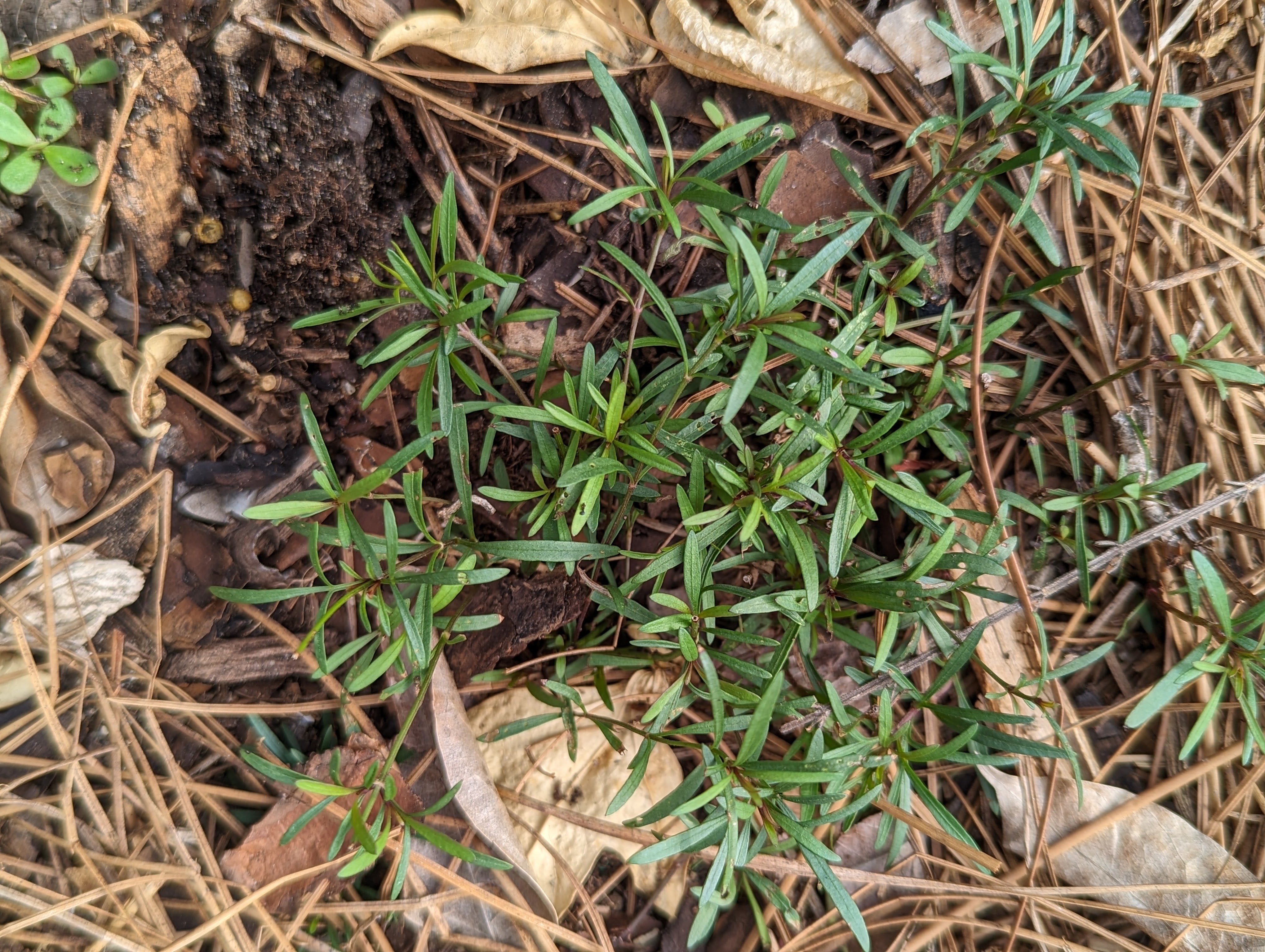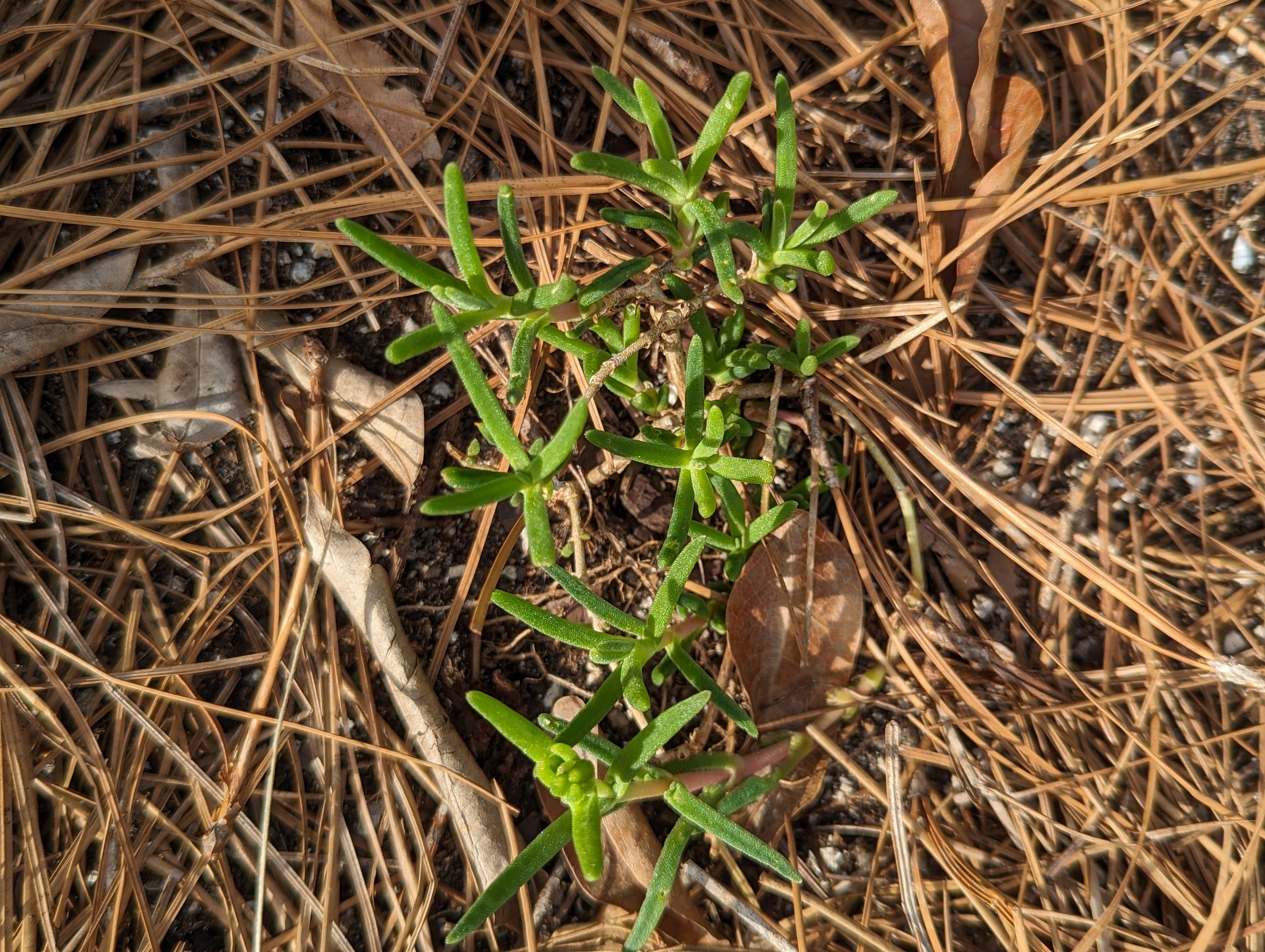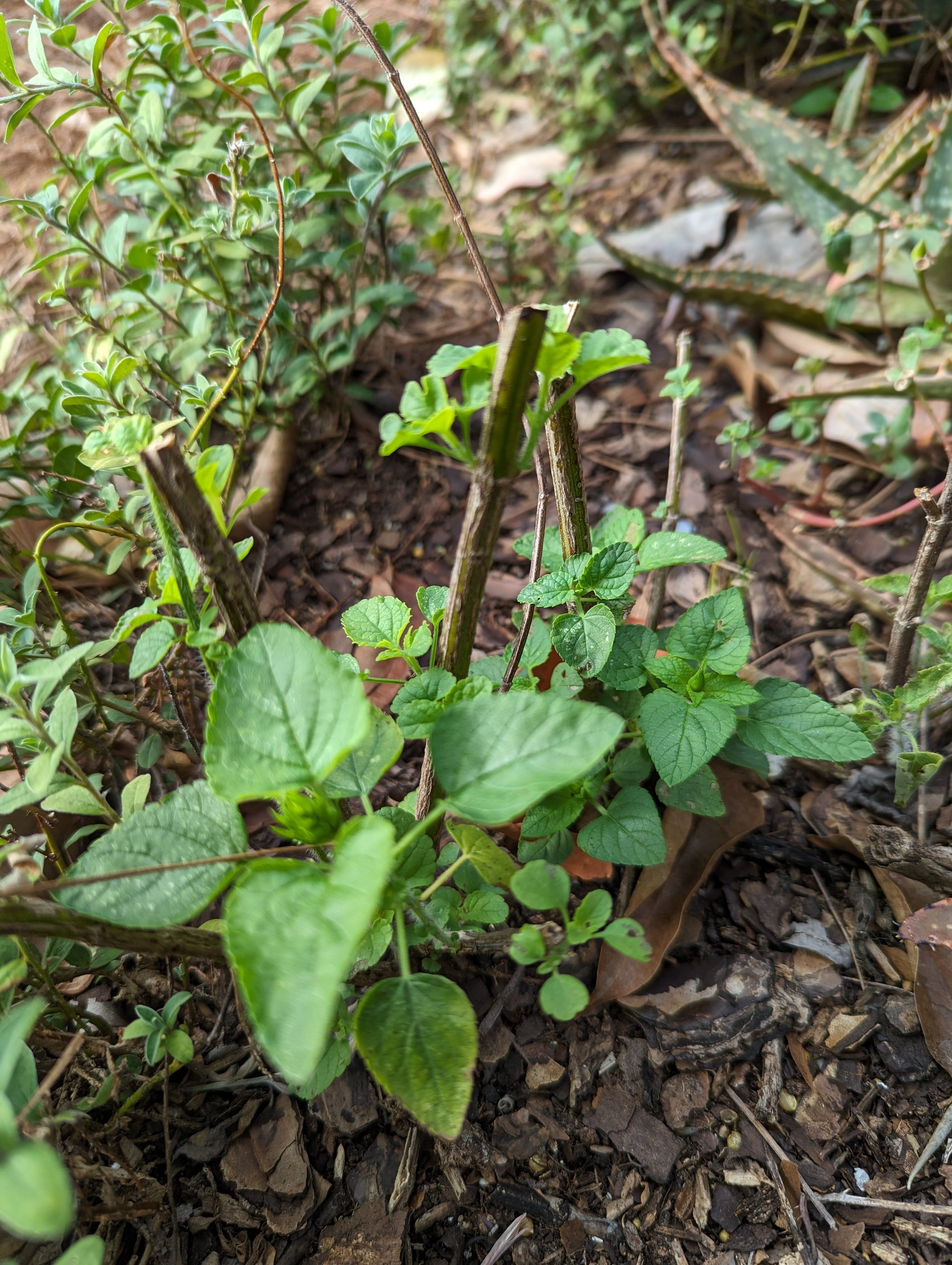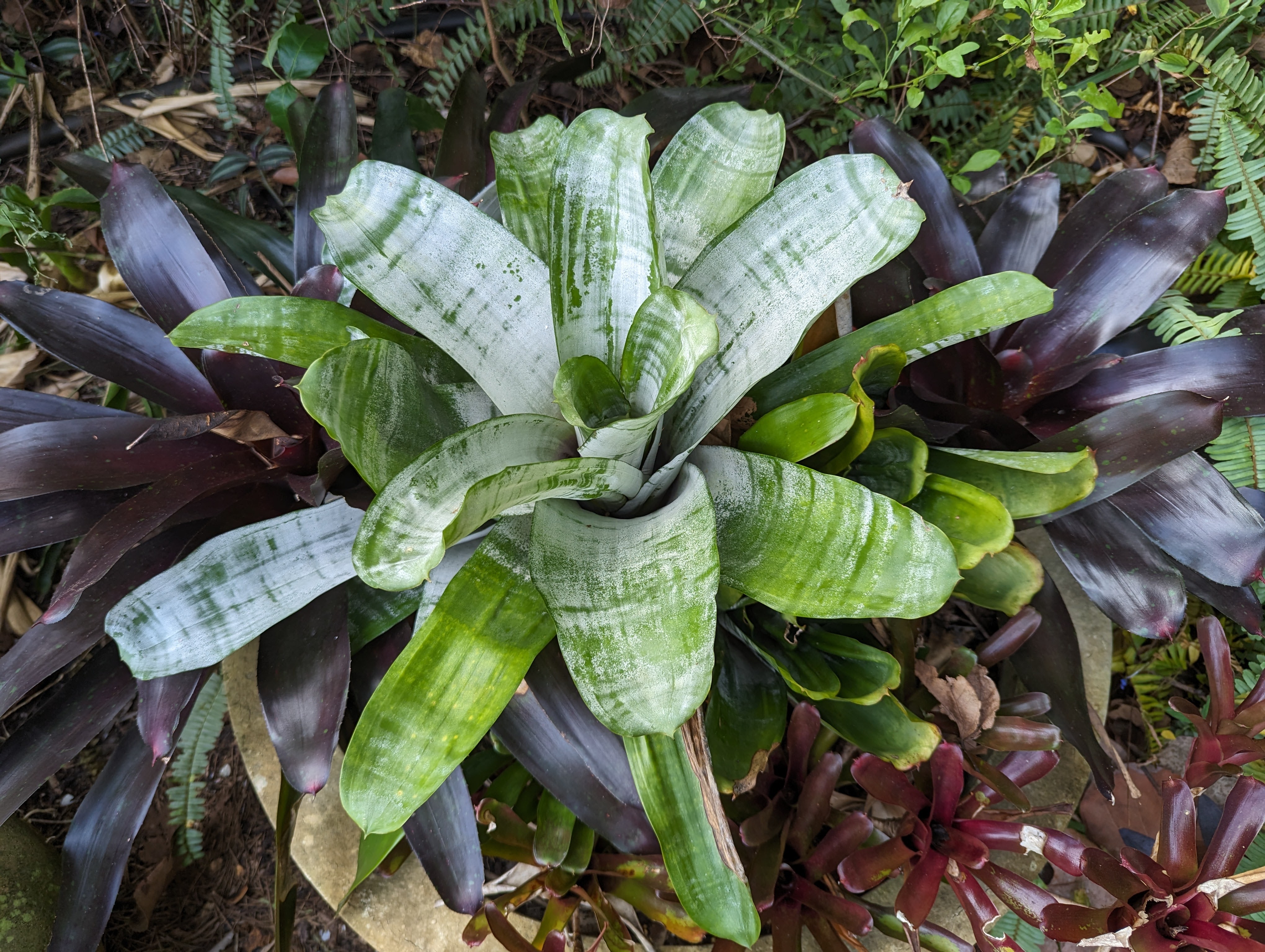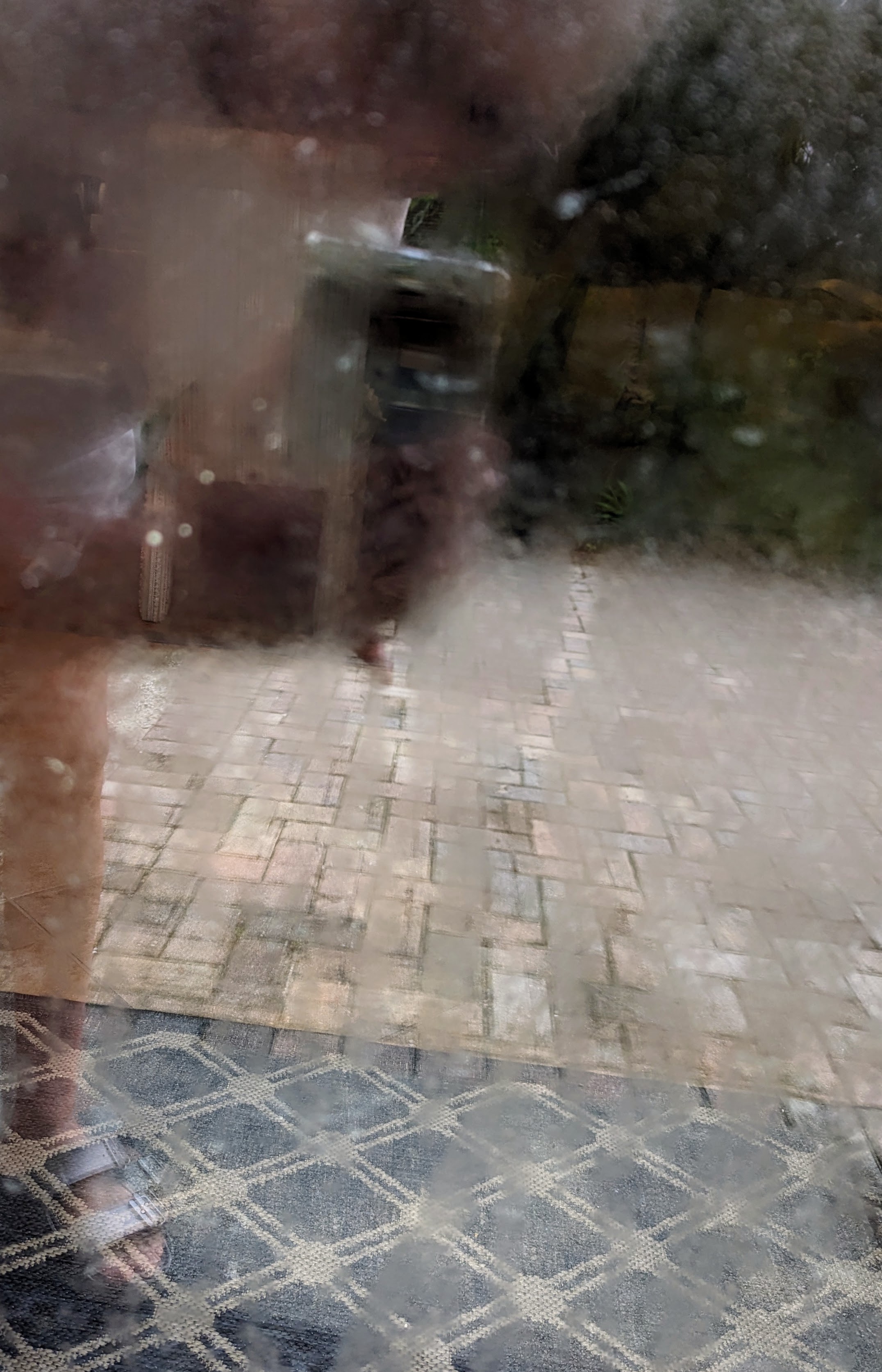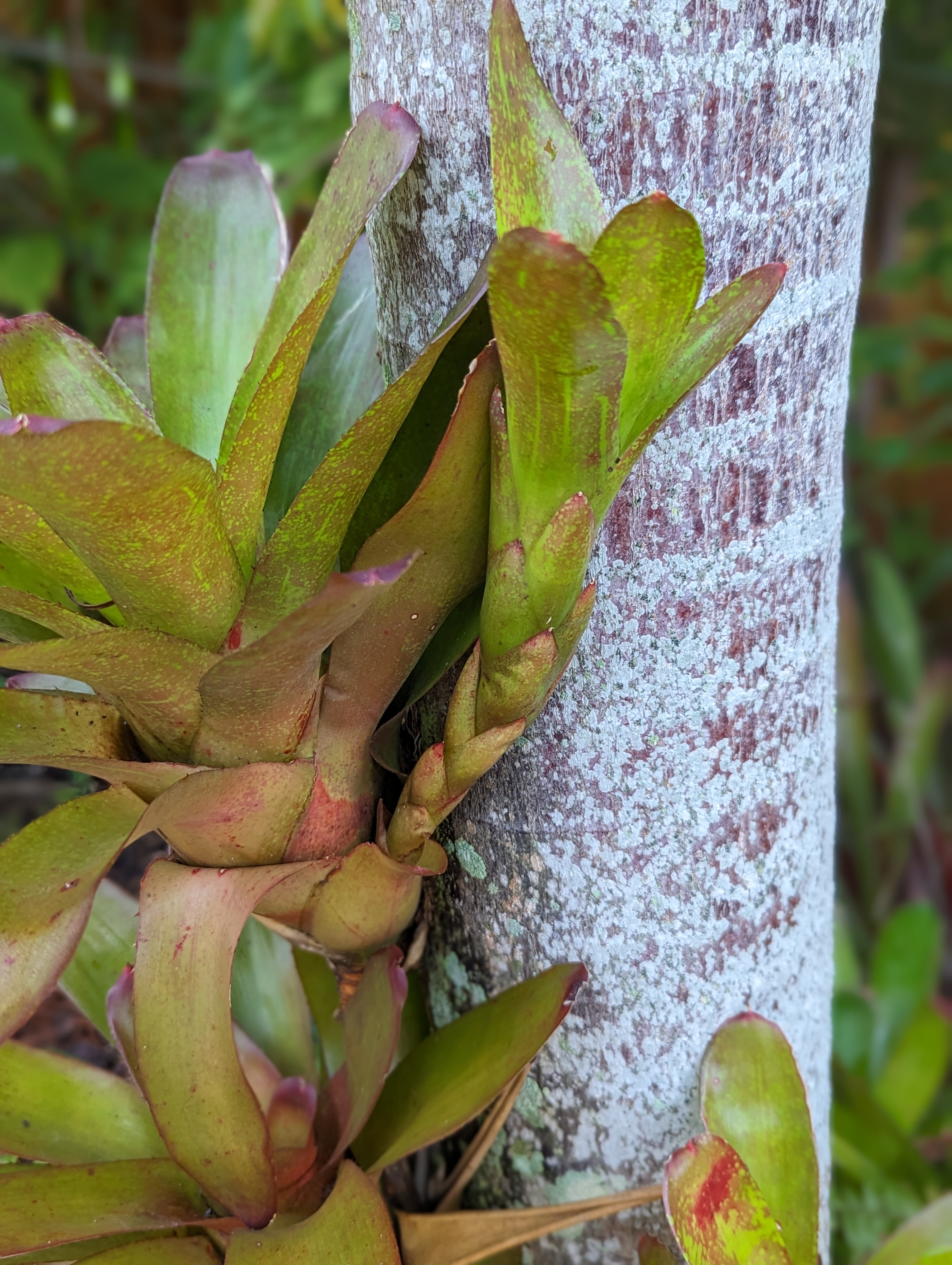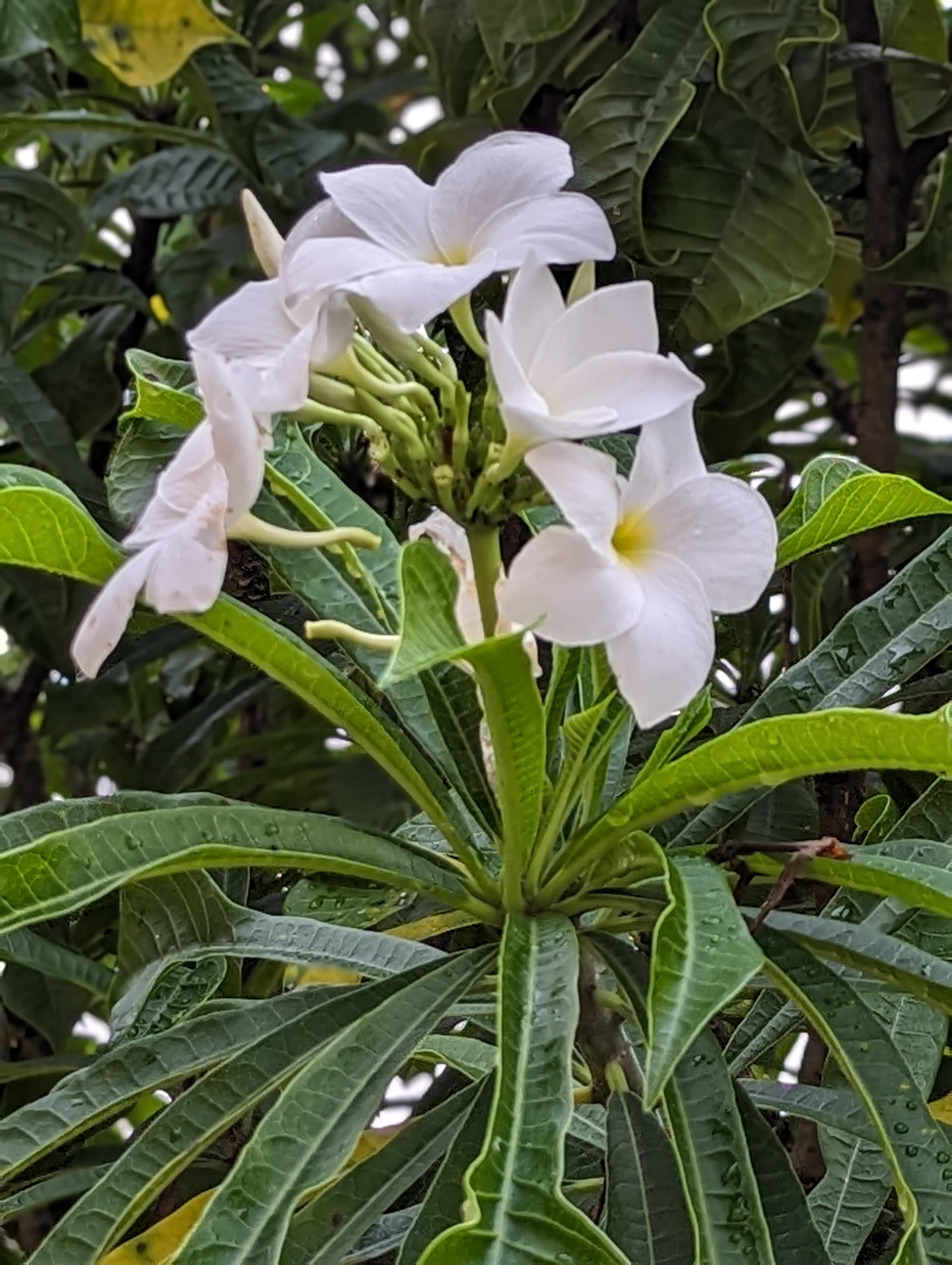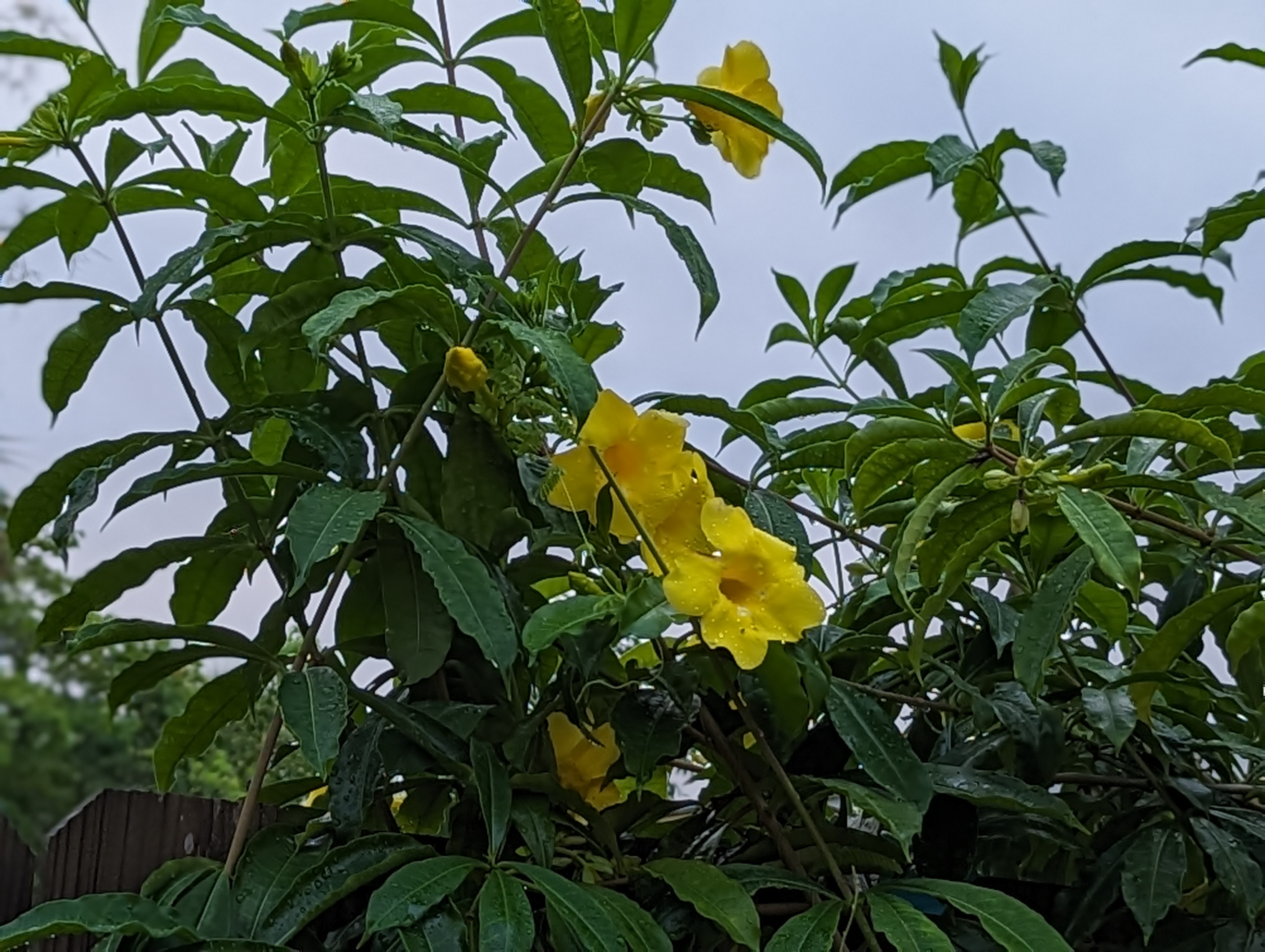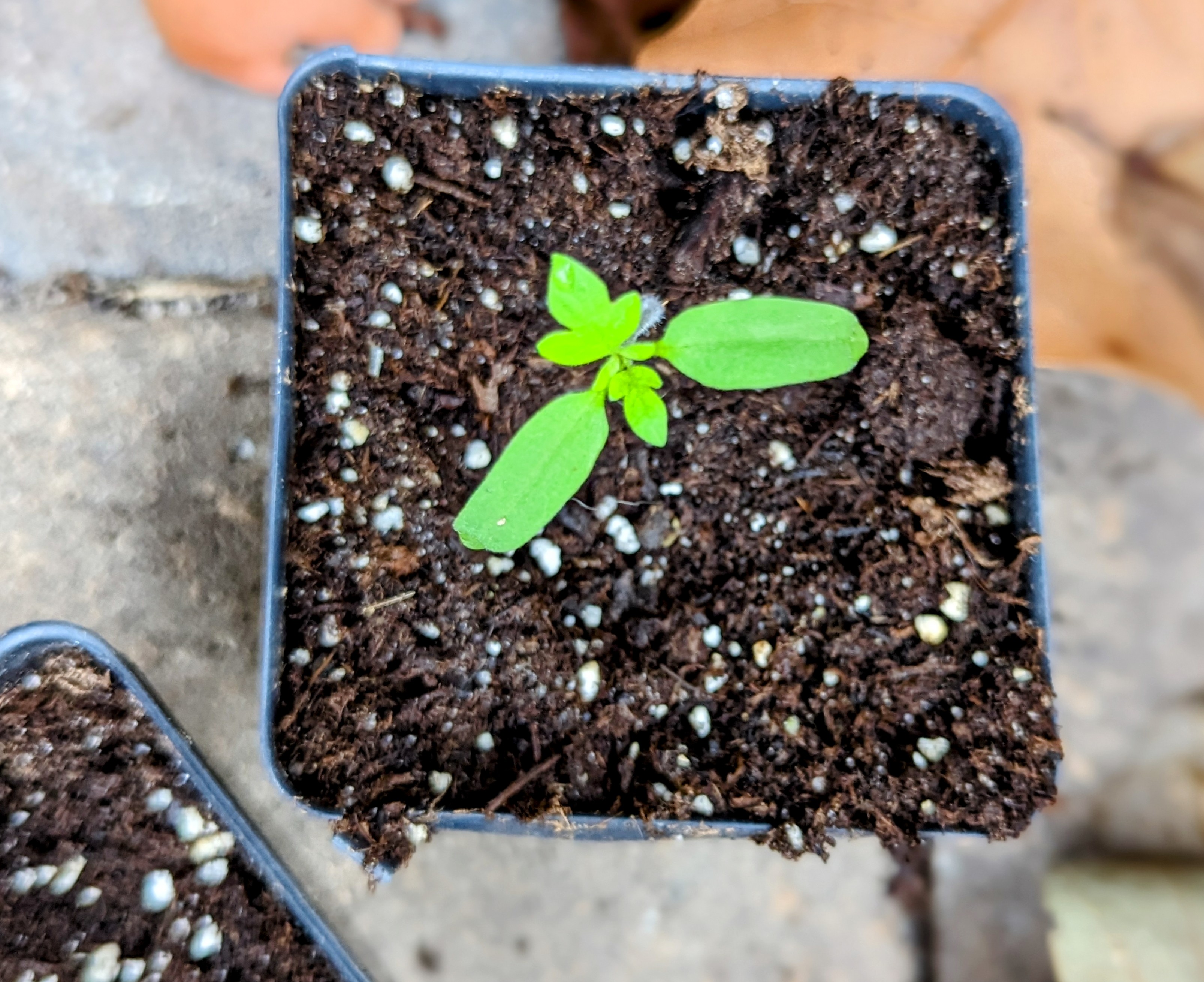Since it has been an unusually rainy winter I have been baking a lot of winter treats. Now that the weather has (sort of) cleared up I am finding treats in the garden. I’m joining fellow SOS’s sharing my garden treats this Saturday, to see other treasures, visit Jim’s blog and follow the links.
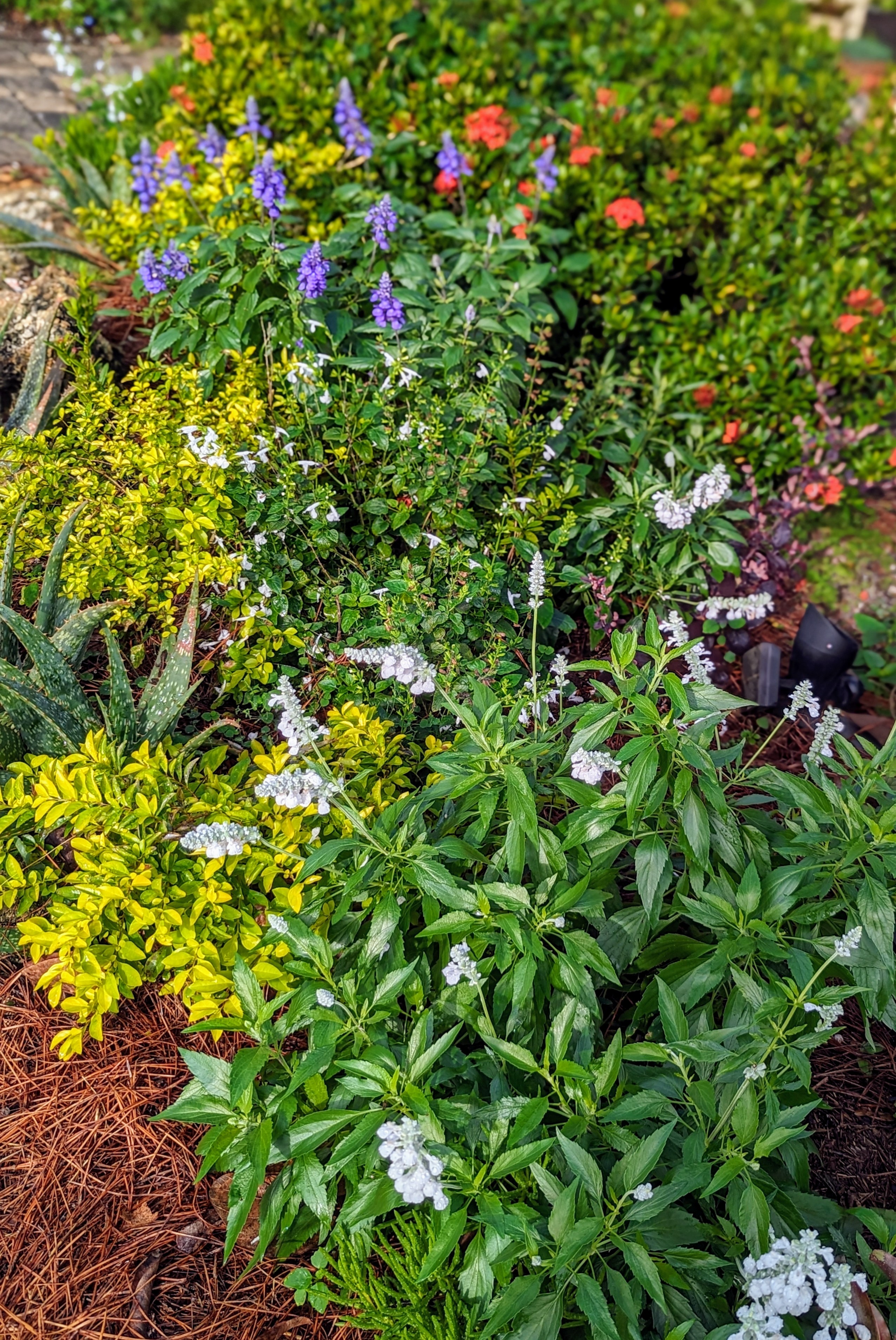
The salvias have been relishing the rain and are showing their appreciation. This bed has ‘White Flame’ Salvia, Golden Dewdrop Duranta (Duranta repens), Soap Aloe (Aloe saponaria), ‘Mystic Spires’ Salvia, and Dwarf Red Ixora (Ixora ‘Maui Red’) in background. These salvias are short lived perennials here.
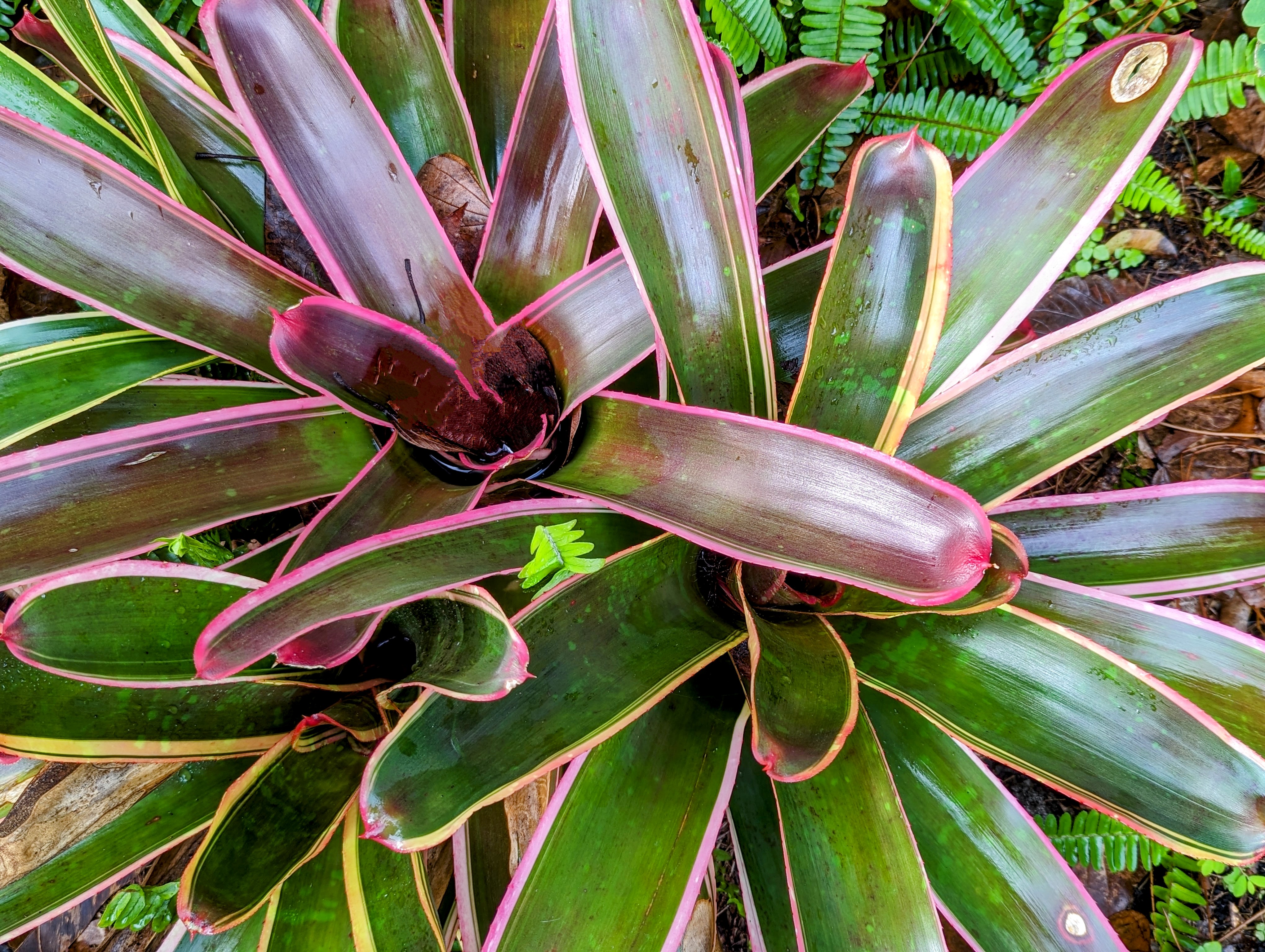
An unnamed Neoregelia Bromeliad variety showing winter color. These are green and white in summer.
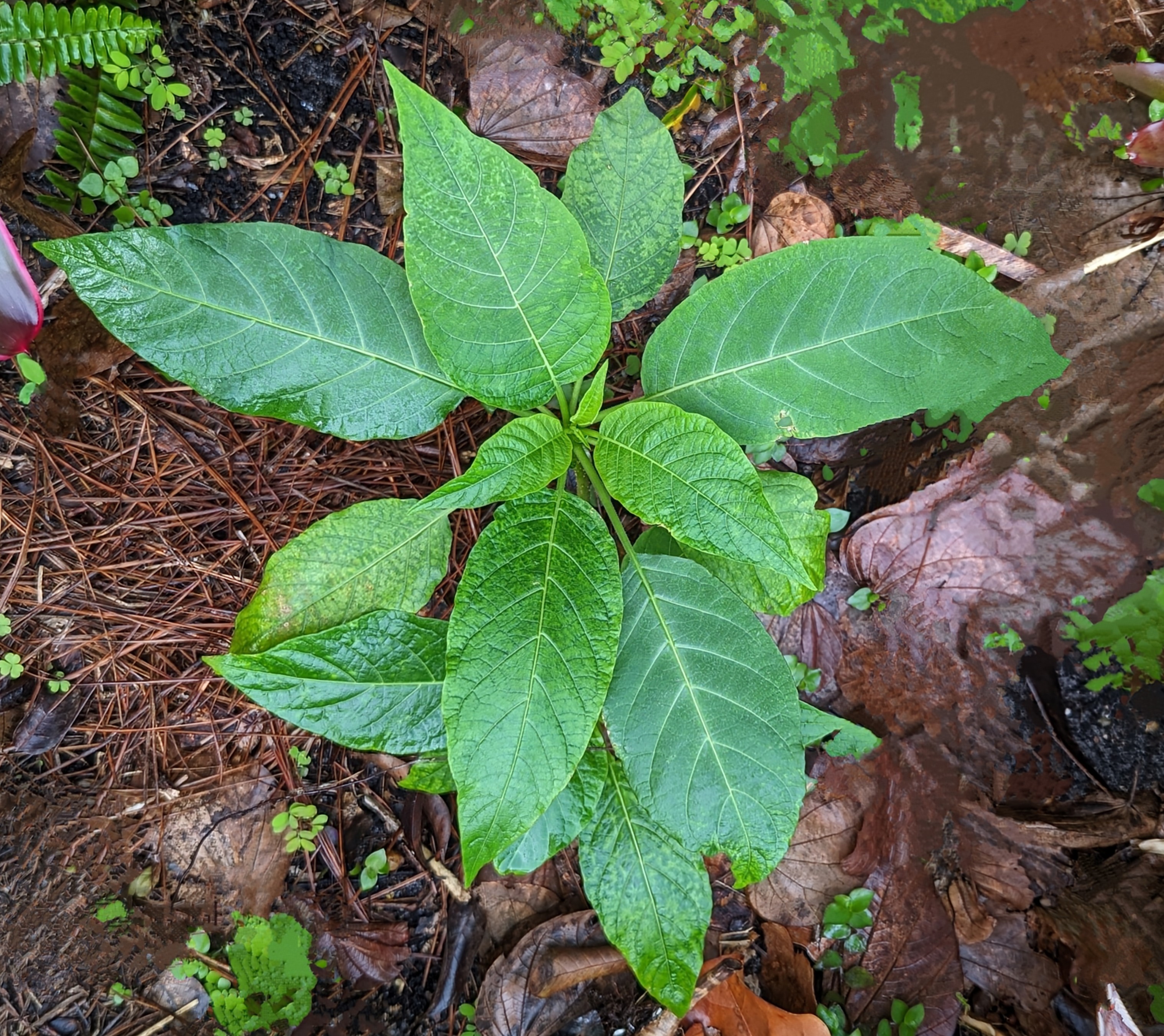
New to me and the garden – ‘Apricot Queen’ Angel Trumpet. This is a rooted cutting I planted in December. It is taking very well and has already produced a side shoot. I have never seen an Angel Trumpet in my neighborhood, so I am wondering about this one and keeping my fingers crossed.
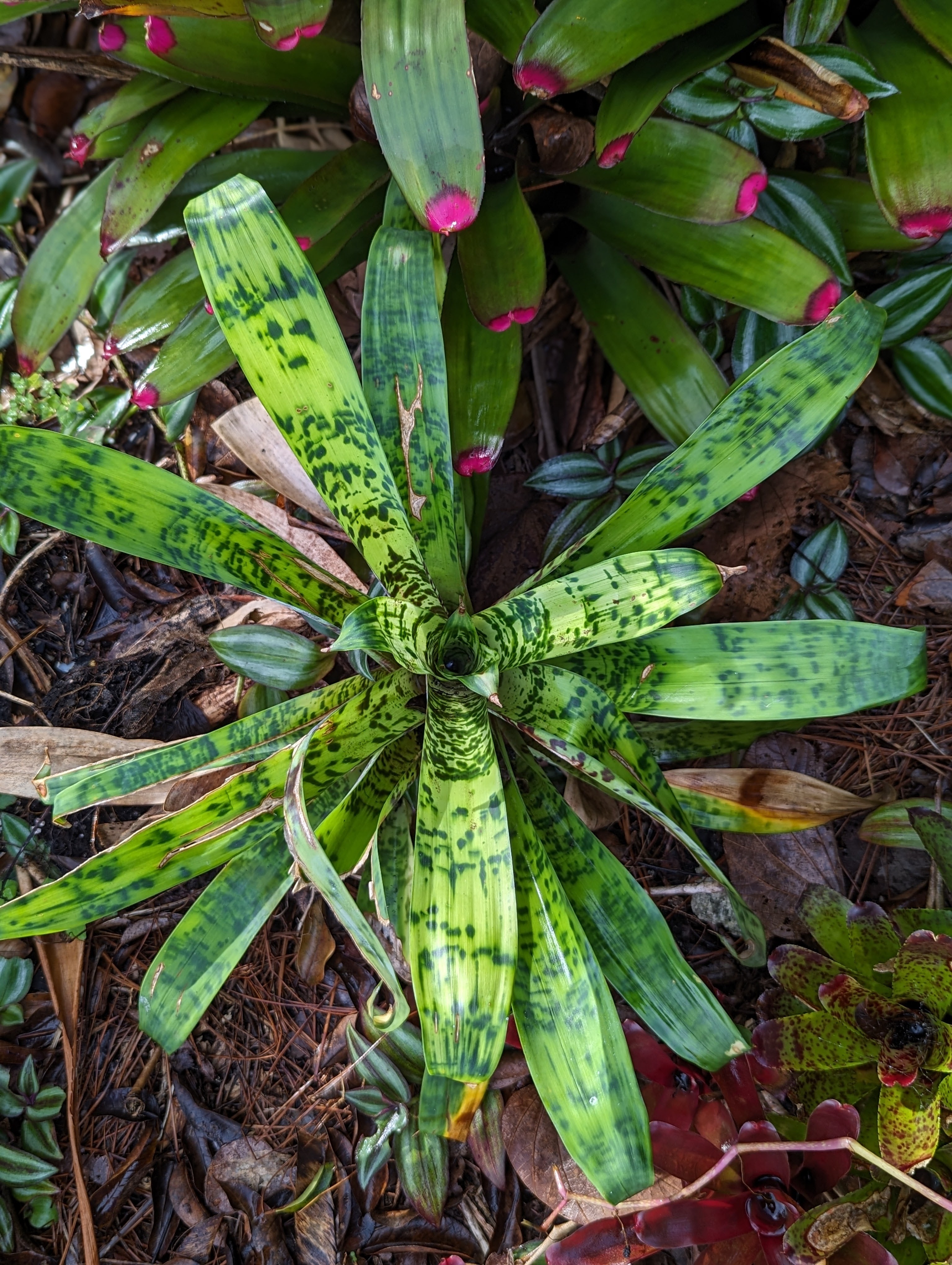
Another treat unearthed when clearing out the garden. A Vriesea ospinae ‘Gruberii’ Bromeliad. Something has been trying to eat the leaves (notice the shredding). It is a rare animal that can eat these.
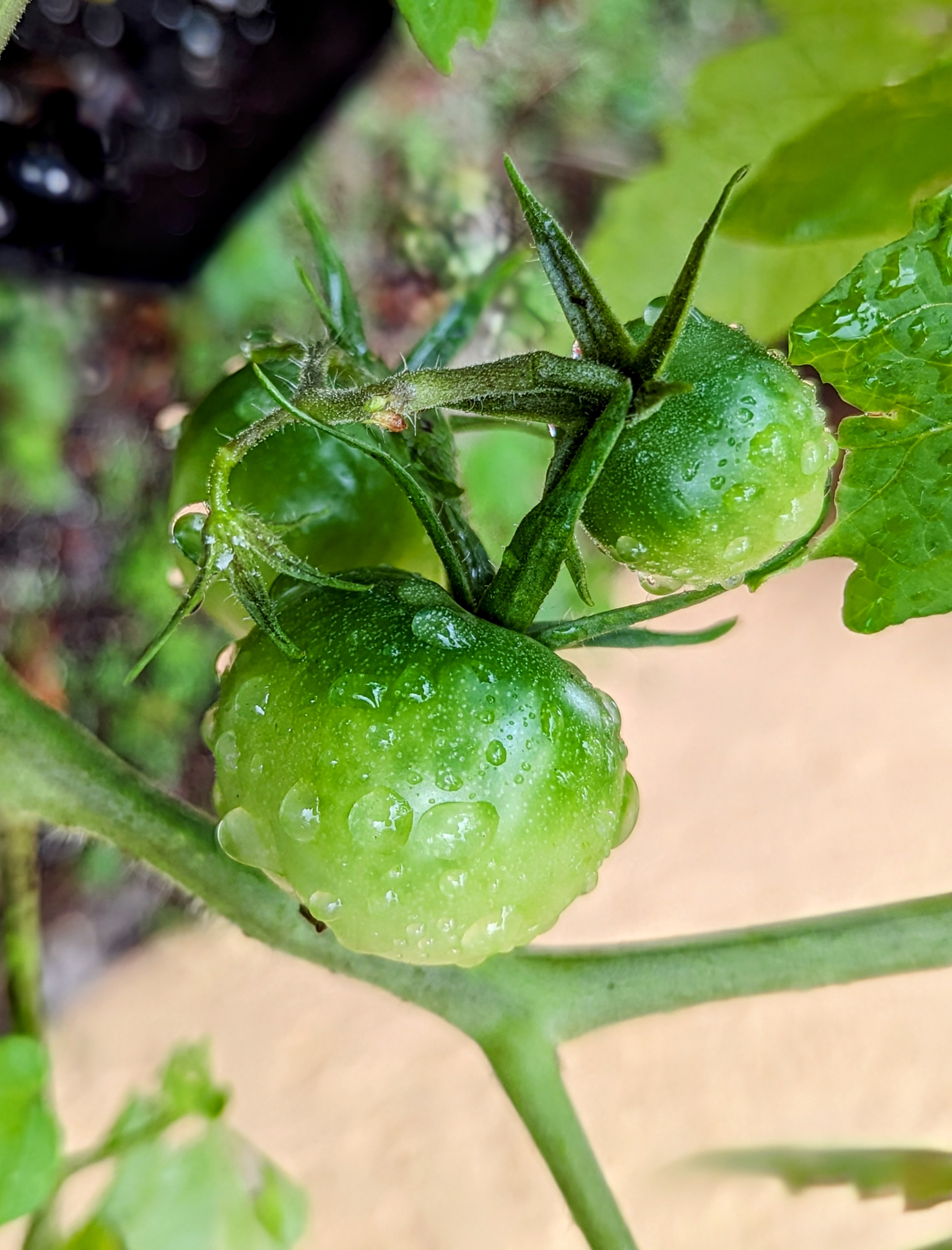
The tomatoes are finally making some progress. I planted all the cherry varieties as I have no luck with big tomatoes. Oddly, these are the biggest cherry tomatoes I have ever seen. Kind of wondering about the seeds!
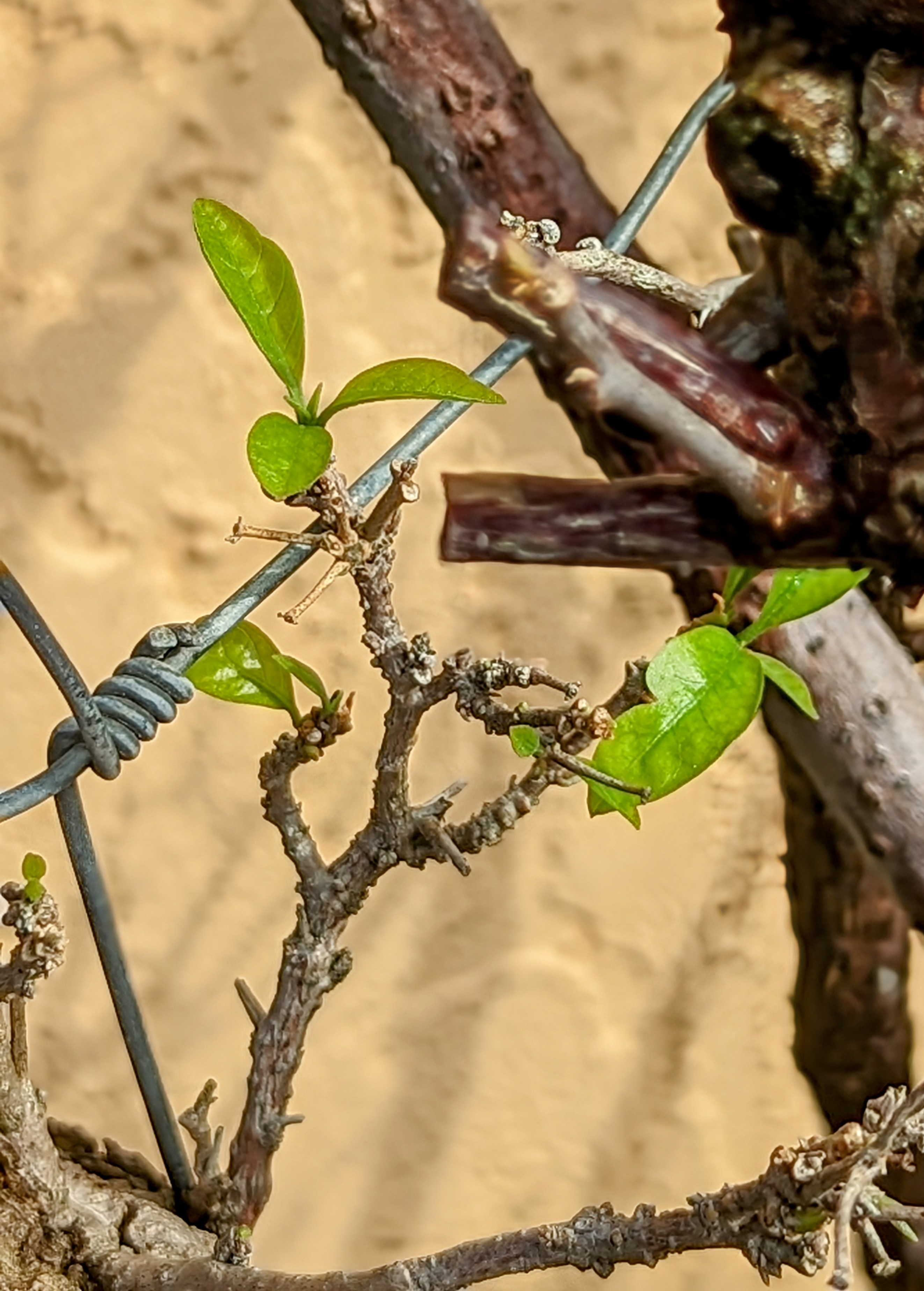
The first sign of recovery on what I suppose was a tactical error. This is Miss Alice Bougainvillea. Apparently, she resents being cut back hard and left out in the cold. Usually, the Bougs are indestructible. Alice has been naked for at least a month and I was fearing her prognosis. I’m planning on buying some special Bougainvillea fertilizer now that the leaves are reappearing.
That’s all from my garden. Wishing everyone Happy Gardening, armchair or otherwise.


